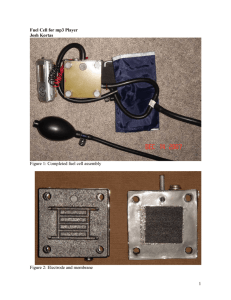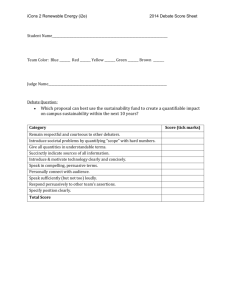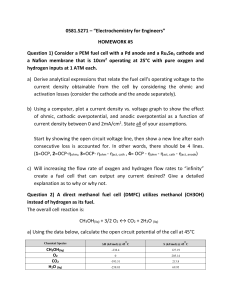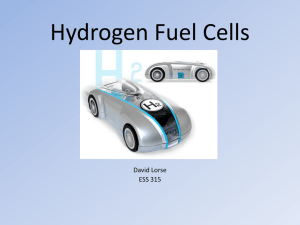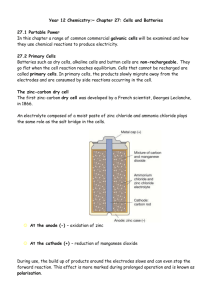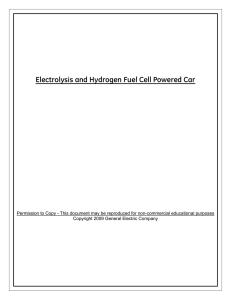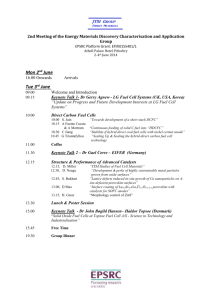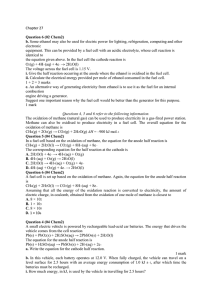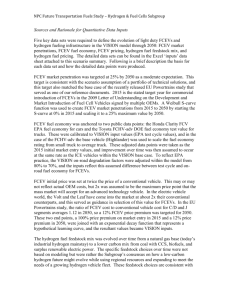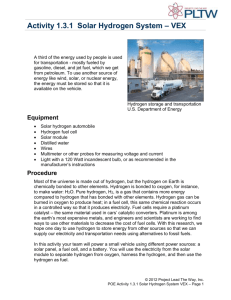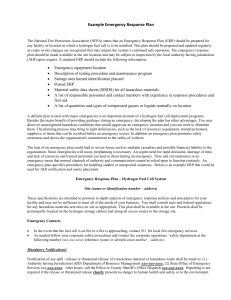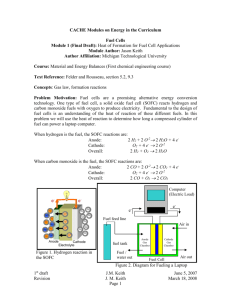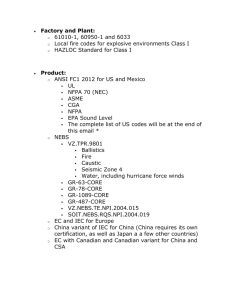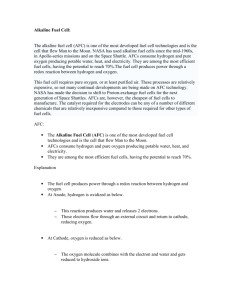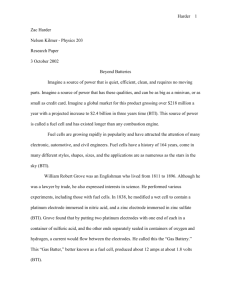FUEL CELLS: Definition Fuel cell is a voltaic cell. It converts
advertisement
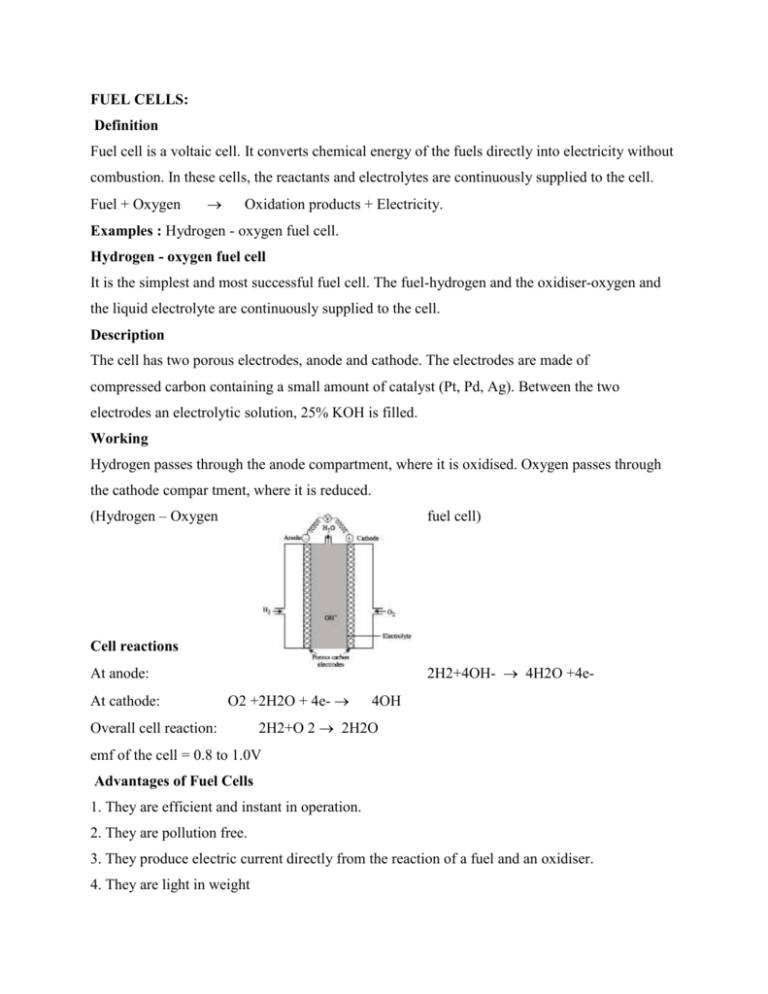
FUEL CELLS: Definition Fuel cell is a voltaic cell. It converts chemical energy of the fuels directly into electricity without combustion. In these cells, the reactants and electrolytes are continuously supplied to the cell. Fuel + Oxygen Oxidation products + Electricity. Examples : Hydrogen - oxygen fuel cell. Hydrogen - oxygen fuel cell It is the simplest and most successful fuel cell. The fuel-hydrogen and the oxidiser-oxygen and the liquid electrolyte are continuously supplied to the cell. Description The cell has two porous electrodes, anode and cathode. The electrodes are made of compressed carbon containing a small amount of catalyst (Pt, Pd, Ag). Between the two electrodes an electrolytic solution, 25% KOH is filled. Working Hydrogen passes through the anode compartment, where it is oxidised. Oxygen passes through the cathode compar tment, where it is reduced. (Hydrogen – Oxygen fuel cell) Cell reactions 2H2+4OH- 4H2O +4e- At anode: At cathode: O2 +2H2O + 4e- Overall cell reaction: 4OH 2H2+O 2 2H2O emf of the cell = 0.8 to 1.0V Advantages of Fuel Cells 1. They are efficient and instant in operation. 2. They are pollution free. 3. They produce electric current directly from the reaction of a fuel and an oxidiser. 4. They are light in weight Disadvantages 1. Fuel cells cannot store electric energy. 2. Electrodes are expensive and short lived. 3. H2 should be pure. Applications 1. H2 - O2 fuel cells are used in space crafts, submarines to get electricity 2. In H2 - O2 fuel cell, the produt water is a valuable source of fresh water for astronauts

